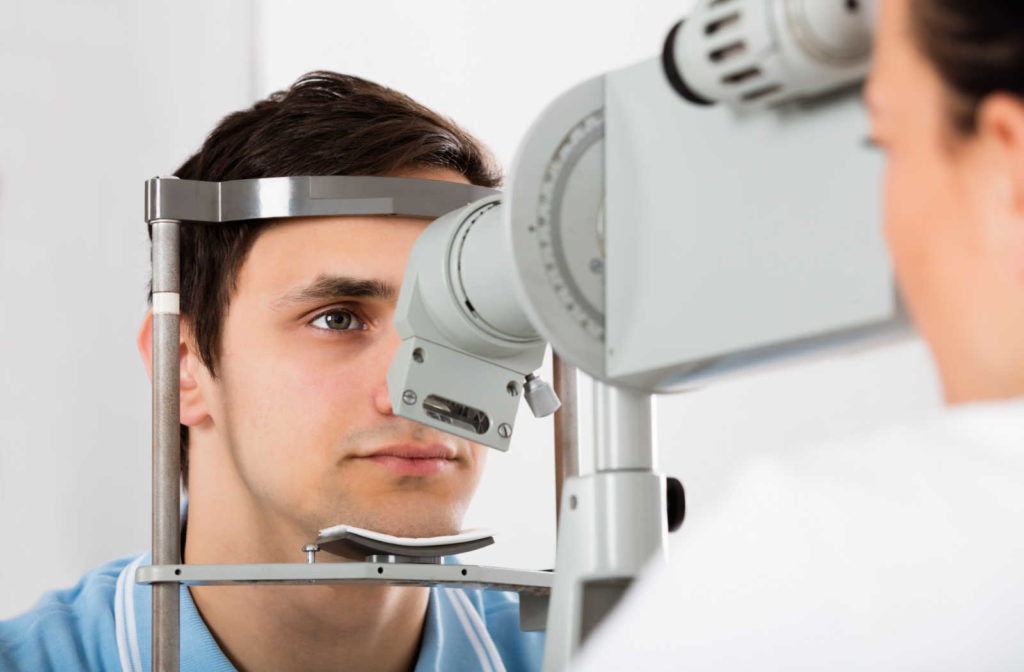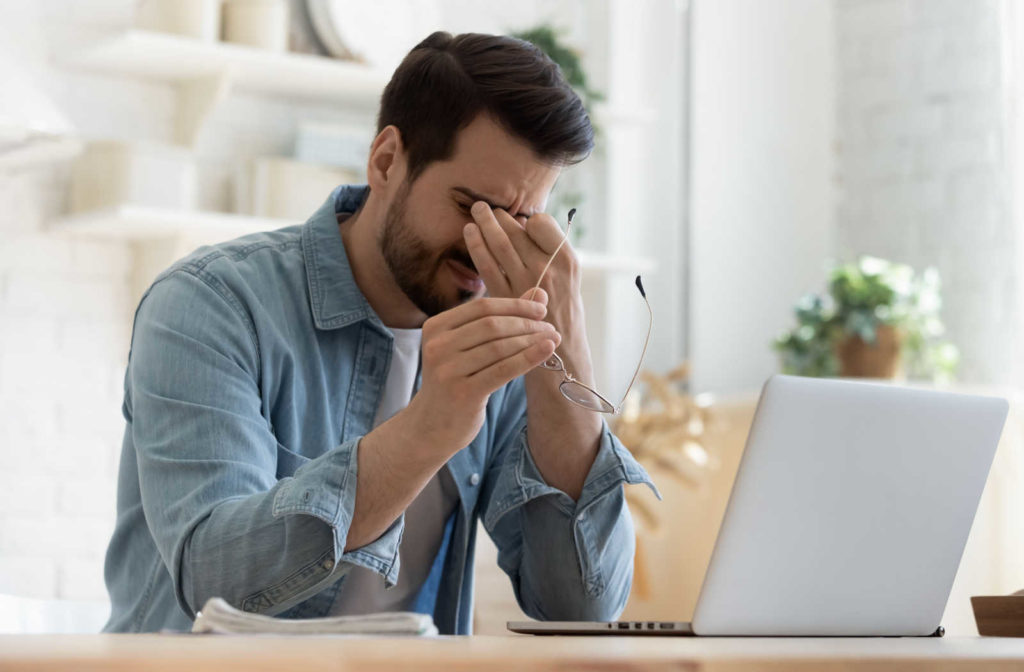Dry eye syndrome is a common condition that affects millions of people every day. It’s characterized by a gritty, burning, or sandy sensation in the eyes that causes irritation and discomfort, and if left untreated, it can cause a hindrance to your day-to-day life. However, there are many ways to treat your dry eye syndrome, including intense pulsed light (IPL) treatment.
IPL is a noninvasive dry eye treatment that can address dry eye symptoms caused by meibomian gland dysfunction (MGD). IPL uses light energy that is converted into heat to treat symptoms of dry eye and promote the production of healthy oils in your eye. This helps your eye’s natural tear production by addressing the underlying causes of dry eye syndrome.
What Is Dry Eye Syndrome?
Your eyes are a complex organ made up of many parts designed to work together to help you see clearly. They naturally produce tears to protect the surface of your eye while moisturizing and hydrating it, but occasionally there can be a problem with your tear production.
These tears are made of 3 layers:
- The water layer: This makes up most of the composition of the tear. This layer helps prevent debris and dust from entering your eye while allowing oxygen to reach your eyes, all while hydrating and moisturizing the eye.
- The oil, or lipid, layer: This layer keeps the water layer from evaporating too quickly.
- The mucus, or mucin, layer: This layer makes sure the tear disperses evenly while remaining attached to the surface of your eye.
In a healthy eye, these 3 layers work together to produce functional tears that protect your eye. However, if there’s a problem with the production of 1 of these layers, this can lead to the development of dry eye.
However, dry eye can also be caused by environmental factors. If you’re in a particularly humid or dry environment, or often work in a dusty area, this can cause your eyes to work harder to stay hydrated. This can lead to a similar issue with tear production.
Diet, nutrition, and lifestyle can play a part as well. A balanced diet rich in fruits and vegetables can give your eyes the vitamins they need to remain healthy. Excessive tobacco or alcohol use can also be damaging to your eyes, leading to dryness.
Fortunately, due to how common this condition is, there are many specialized treatment options available for dry eye therapy, like IPL treatment.
What Is IPL Treatment?
IPL dry eye therapy is a noninvasive treatment that uses light to target specific structures in your skin. While this treatment was originally designed for cosmetic purposes, it’s been successfully adapted and adjusted to be used for dry eye.
During this treatment, a specialized device emits short pulses of light. These become absorbed by the blood vessels and structures around your meibomian glands—the oil glands at the edge of your eyelids near your eyelashes. These glands produce the oils used in your tears that keep them from evaporating or drying out too quickly.
This light stimulation reduces inflammation and helps promote the production of healthy oils, addressing the root causes of your dry eye syndrome rather than simply treating the symptoms. Simply put, IPL treatment aims to improve how your meibomian glands work to restore your eye’s natural tear production.

Who Can Get IPL for Dry Eyes?
While IPL treatment can be an effective option for managing dry eye syndrome, it may not be suitable for everyone. The decision to try IPL therapy should be discussed with your optometrist during your next comprehensive eye exam. They can evaluate your specific situation and needs and help determine whether or not IPL would be effective.
There are a few factors an optometrist may consider before recommending IPL, like:
- The cause of your dry eyes
- What other treatments you may have tried, like eye drops, dietary changes, and hygiene adjustments
- The severity of your symptoms and how long you’ve had them
- Your medical history and overall eye health
- How sensitive your eyes are to light
IPL is typically used to treat dry eye caused by MGD, so your eye doctor may also check how healthy your meibomian glands are. If your dry eyes are caused by environmental factors or other causes, IPL may not be effective.
Find Out if IPL Treatment Is Right for You
Before making a decision about the right treatment for you, it’s a good idea to consult your optometrist. Getting the advice of an experienced and caring professional is irreplaceable—they can examine your eyes, monitor changes that may be occurring, and help determine the cause of your dry eye syndrome.It’s important to note that while IPL therapy is an effective treatment for dry eye, not everyone is a candidate. To learn more about IPL therapy and whether it may be the right choice for you, book an appointment with us at Discover Eyecare today!



